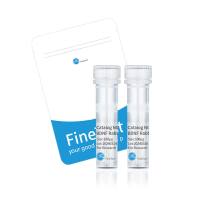Measurement of Antibody Concentrations by Hemagglutination
互联网
2624
During every stage of development and production of diagnostic or therapeutic antibodies, it is necessary to have an assay to measure antibody concentration. Several techniques are routine in virtually all antibody laboratories. High-performance liquid chromatograpy (HPLC) using an affinity matrix (protein A or protein G) is rapid and quantitative and measures most types of antibody, though the equipment is quite costly. Enzyme-linked immunosorbent assay (ELISA) is widely used and extremely versatile. By judicious choice of anti-Ig reagents, specific for heavy chain, light chains, or particular domains, it is possible to screen for almost any desired Ig molecule or fragment. This is specially useful when analyzing a complex mixture (1 ). Native gel electrophoresis is a useful technique for screening relatively concentrated samples (e.g., from fermentors) since different antibodies can be readily distinguished by their characteristic mobilities. However, none of these methods are really suited to the rapid semiquantitative testing of huge numbers of samples that is often necessary early in a project (when screening for a rare hybridoma or transfectant, or for somatic mutants) and for routine analysis of process samples during cell culture. Instead we have found that red cell agglutination as originally developed by Coombs (2 ,3 ), is convenient, quick, and very cheap.





